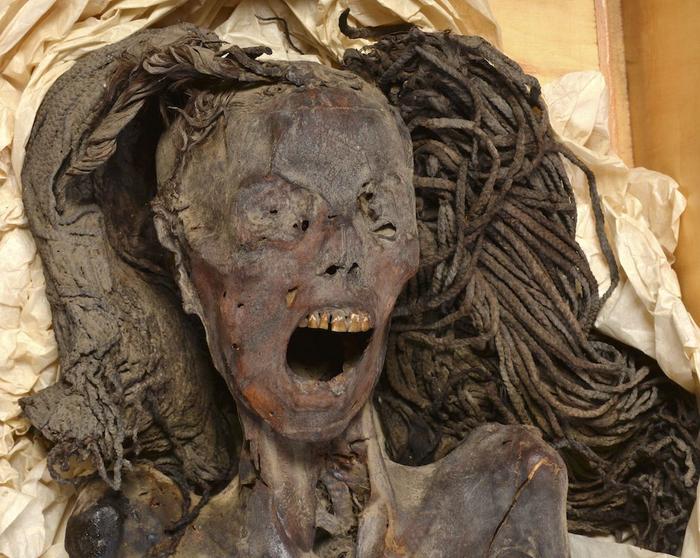A 3,500-year-old mummy, known as the “Screaming Woman” due to her open-mouthed expression, may have died in excruciating pain according to a new study. Researchers from Egypt used advanced imaging and analytical techniques to investigate the mummy’s life, death, and costly embalming process.
The Screaming Woman mummy was discovered in 1935 by a Metropolitan Museum of New York expedition. Found in a separate burial chamber beneath the tomb of Senmut, the architect and overseer of works for Queen Hatschepsut, the elderly woman’s mummy was notable for her agonized facial expression.
Imported Embalming Materials Suggest High Status
Dr. Sahar Saleem, a professor of radiology at Cairo University, and her colleague Dr. Samia El-Merghani, used CT scans, scanning electron microscopy, Fourier transform infrared spectroscopy, and x-ray diffraction analysis to study the mummy’s condition and the materials used in her embalming.
Surprisingly, the mummy was found to be in good condition despite the fact that her internal organs had not been removed, which was unusual for mummification practices during the New Kingdom period. Analysis revealed that she had been embalmed with expensive, imported materials like juniper and frankincense, suggesting her high status.
The mummy’s natural hair had been dyed with henna and juniper, while her wig, made from date palm fibers, was treated with quartz, magnetite, and albite crystals to stiffen and color it black, a favored look in ancient Egypt that represented youth.
Cadaveric Spasm May Explain Mummy’s Screaming Expression
CT scans estimated that the Screaming Woman was approximately 48 years old at the time of her death and had suffered from mild arthritis of the spine. While no obvious cause of death was found, Dr. Saleem hypothesized that the mummy’s expression could be the result of a cadaveric spasm, a rare form of muscular stiffening associated with violent deaths under extreme physical conditions and intense emotion.
“The Screaming Woman is a true ‘time capsule’ of the way that she died and was mummified,” concluded Dr. Saleem.
The study’s findings shed light on ancient Egyptian embalming practices and the trade of costly materials like frankincense, which was brought from Punt (possibly Somalia) by an expedition led by Queen Hatschepsut. The discovery of similar materials in the tomb of Tutankhamun further supports the evidence of this ancient trade.
Why it matters: The Screaming Woman mummy provides a fascinating glimpse into life, death, and burial practices in ancient Egypt. The use of advanced scientific techniques to study this 3,500-year-old mummy helps us better understand the social status, health, and potential causes of death of individuals from this period, as well as the sophisticated embalming methods and trade networks that existed at the time.


